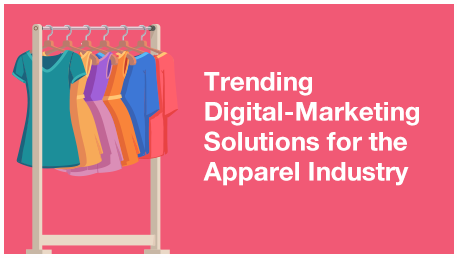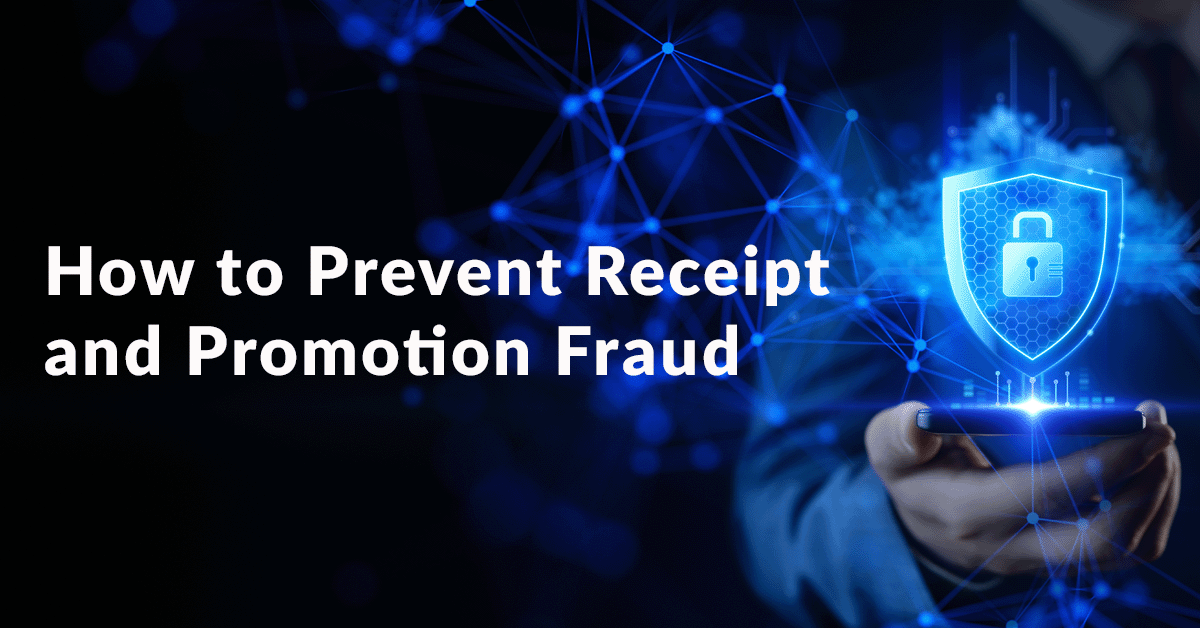THE APPAREL INDUSTRY has been facing some seismic shifts. For one, Americans are spending less and less on clothing. In1977, clothing accounted for 6.2% of U.S. household spending, but four decades later, it’s plummeted to half that. Apparel is being displaced by travel, technology, eating out and other leisure activities. To make matters worse for traditional retailers, consumers glued to their phones would rather browse online – spawning a new universe of fast fashion, online fashion influencers, e-tailers, and the rise of all things digital.
U.S. Apparel Industry – Key Stats
- The US Apparel market is growing, but at a slower pace: The United States’ apparel market is expected to grow from $225 billion in 2012 to $285 billion in 2025; a CAGR of 2%.
- Apparel is one of the most popular retail e-commerce product categories: US Retail e-commerce sales of apparel and accessories is anticipated to reach $103.66 billion in 2018, making up 19.7% of total retail e-commerce sales
- Online sales are growing faster than offline: While overall apparel sales shrank by 2% in 2017, online sales are projected to reach 12.5% growth by 2022, and a value of $170.52 billion. By then, department stores will account for just 8% of the apparel market, down from 24% in 2006
Trends and Opportunities
Rise of Fast Fashion and hyper-short Trend cycles: Apparel brands and retailers are scrambling to keep up with shorter trend cycles and a growing consumer demand for instant gratification. Influencer marketing and other social media strategies help new trends travel fast, and “See-Now Buy-Now” tools on platforms like Instagram and Pinterest allow shoppers to act on impulse more than ever. This has made ‘fast fashion’ brands more ascendant, forcing U.S. retailers to adopt digital processes in efforts to speed up and cheapen down their output.
Dominance of eTailers and Direct-to-Consumer Channels: With apparel sales shifting online, decreased foot traffic is a top challenge for retailers in 2018 and beyond. Customers – particularly Millennials — are increasingly opting for a streamlined online user experience, and as a result, Amazon is now the No. 1 apparel retailer in the US, having gained 1.5% of market share in 2017.This shift to e-commerce is enabling the growth of direct-to-consumer (D2C) fashion channels, which are projected to eclipse department stores and “other” retailers by 2027. Amazon has also recently started rolling out Prime Wardrobe, a D2C subscription service, further expanding its plans for apparel domination.
Big Data & End-to-End Digital Transformation: technology is transforming the apparel business – manufacturers use robots to sew and cut fabric
- Artificial Intelligence to forecast styles and optimize production
- Virtual Reality to help sell fashions
- Big Data to make personalized recommendations that keep customers coming back.
- Wearable-tech will itself aid in a fully customized shopping experience – for example, 3D scanning and ‘smart’ garments will be able to measure users’ figures and use the data to point them to specific styles that will fit them best.
As brands increasingly deploy these digital tools, a new universe of personalization will open up to consumers.
Transparency & Conscious Consumerism: With social and environmental consciousness on the rise, consumers are choosing to dictate their beliefs via their wallets. American shoppers will pay a 10 to 15% premium for clothes that are made ethically – and support brands that are actively seeking sustainable practices as they relate to health and safety standards, wages, and environmental stewardship.
Brands that are adopting better standards and offering transparency to consumers are being ranked as brands with more authority and influence.
Digital Marketing Tactics: Finding the Perfect Fit
Apparel brands are recognizing that fashion consumers have an entirely new set of expectations. With a strong focus on meeting Millennial and Gen Z shoppers in their online habitats, brands are de-emphasizing traditional print and broadcast in favor of digital campaigns – and, beyond that, elevating the importance of online shopping channels. By tapping into big data and analytics, brands are creating personalized connections with consumers and building them highly customized shopping experiences.
MOBILE MARKETING
Since consumers use their mobiles to browse online (more than any other device), and are increasingly drawn towards the instant gratification of fashion shopping, mobile marketing is the ideal approach. Brands are mobile-optimizing their marketing through the use of digital tools such as Augmented Reality (AR) apps, rewards promotions, and digital style guides that provide ideas on how to incorporate trends in everyday life.
Under Armour used mobile rewards promotions to drive sales during the competitive back-to-school season in Canada. Snipp developed a national sweepstakes promotion, entry to which was provided to consumers who purchased Under Armour products at specific retail outlets. Consumers could send in their receipts via text or web upload to win gift cards and a Grand Prize trip for 4 for an ultimate VIP NHL Experience.
Japanese apparel company Uniqlo created an innovative mobile-activated campaign that used fast-moving images on billboards containing unique product codes that could only be captured by taking a photo of the display. Shoppers were then asked to upload the five-digit code to the campaign website to redeem a sample from its HEATTECH clothing line.
Designer Rebecca Minkoff embeds QR codes into handbags, so customers can scan the codes with their mobiles to unlock content and rewards. Consumers scanning the QR code initially unlock a video from Rebecca Minkoff herself, helping drive a deeper connection to the brand.
Fashion brand Maggy London created an AR catalog for mobile users, using 3D scanning and Apple’s ARKit. Shoppers can put a mobile phone up to items in the catalog and view them as realistic, virtual 3D products.
IN-STORE TECH
Although online sales may be growing more quickly than offline, traditional retail isn’t going away. Brick and mortar stores are still where US internet users are most likely to complete a clothing purchase. Even as e-commerce and D2C take off, consumers still want to be able to touch, feel, and try on clothes, making the traditional department store a still-valuable sales channel that helps build or strengthen a connection between the customer and the label. Many re-tailers are, however, incorporating digital technology to add a ‘wow’ factor to the offline retail experience, from the simple (Bluetooth Beacons and in-store push notifications), to the uncommon and exciting (Artificial Intelligence, Augmented and Virtual Reality) in order to encourage an in-store trip.
New York designer Rebekka Minkoff uses tech to make her stores stand out – with features like large digital walls that allow consumers to order drinks or request assistance, interactive mirrors in dressing rooms that let consumers set the lighting to match where they will wear the clothing, and self-checkout technology that allows customers to simply pay for their items on their mobile or iPad and then walk out.
Topshop has used in-store AR mirrors so customers don’t need to get physically undressed to try on clothes, while Uniqlo’s Magic Mirrors let customers see how apparel they try on in-store looks in different color options.
Burberry, in an effort to make its offline and online experiences as seamless as possible, has fitted its products with RFID tags that can communicate with shoppers’ mobiles, providing them with access to information about how items were produced or recommendations on how they can be worn or used. In-store sales associates also use tablets to pull up customer information and make personalized recommendations based on their entire sales history.
PERSONALIZATION AND TARGETING
Today’s shoppers are savvy to the sheer volume of data that gets collected on them, and have come to expect a personalized experience that would justify this collection. This can translate into having products they’ve abandoned in shopping carts remarketed to them, or apps that push special, customized offers each time they enter or pass by a store. Online and offline re-tailers are increasingly tapping into AI and big data to deliver on the promise of a highly customized shopping experience.
Retail brand Barneys New York is using data to target individual customers based on purchase and browsing behaviors. If a shopper has shown to like a specific designer or a specific product, Barneys can let them know when there are new arrivals for that designer, or products related to it.
AI-based digital stylists and chatbots are in the process of taking off. Designed to provide feedback on outfit choices or suggest alternatives, these digital assistants offer brands tremendous, cost-effective personalization potential. Jeans brand Levi’s recently unveiled the Levi’s Virtual Stylist, which helps users find the perfect pair of jeans by messaging with a bot about sizes and styles.
DIGITAL INFLUENCER CAMPAIGNS
Today’s consumers don’t trust traditional ads – Nielsen’s “Global Trust in Advertising” report notes that consumers mostly rely on recommendations from friends and family; and two-thirds trust opinions posted online. With social media, the definition of ‘friends and family’ has expanded to include everyone a person follows online. These influencers are hugely significant to shoppers. Fashion influencers in particular have staggering engagement metrics – from picture and video views to subscriber numbers — and the kind of loyal audiences that can elevate brand awareness to make-or-break levels. According to a survey of fashion industry professionals, 78% of brands implemented influencer marketing campaigns in 2017, up from 65% the previous year, and nearly 95% of marketers who currently use an influencer marketing strategy believe it is effective.
GAP created a highly successful influencer-led campaign which featured popular bloggers and social media personalities, showing how they incorporate GAP clothing into their personal wardrobes. Consumers browsing through their posts were given the immediate option to “Shop this Look” via Instagram.
PARTNERSHIPS WITH E-TAILERS
E-tailers are dominating apparel sales growth, and within them, Amazon is the preferred choice for shoppers. But surveys show that consumer preference for shopping online is not only about low prices. Ease of use (65.4%) and cheap delivery (62.2%) have been found to be far more appealing. For smaller brands, an e-tailing platform, which draws huge amounts of online traffic and, by virtue of scale, offers highly streamlined and cost effective fulfillment, is something they couldn’t hope to compete with. Even for powerhouse brands, linking digitally to strong online platforms is a vital way to reach the widest range of customers.
PARTNER UP WITH CO-BRANDED PROMOTIONS
Social media platforms are hugely valuable to fashion brands. These platforms encourage tribe-building, spawning online advocates that can skyrocket a relatively unknown brand into worldwide name recognition. But as these platforms have taken hold, one key lesson has emerged: they are not one-size-fits-all in nature. Smart fashion brands are tailoring their social media strategies for each individual platform. They’re using Instagram to share visually rich images, and taking advantage of the stories feature to give followers a sneak peek behind the scenes at fashion shows. They’re getting cheeky and spontaneous for Snapchat, and showing their personality on Twitter.
Calvin Klein created a collaboration with Amazon Fashion for the 2017 holiday season. Along with an exclusive online shop, it opened two pop-up stores in New York and Los Angeles. Each pop up store was outfitted with high-tech surprises, including Alexa devices in fitting rooms to allow shoppers to ask questions about garments, play music, and control lighting. Meanwhile, customization stations allowed shoppers to personalize their products as well as create content to share online.
Gucci tailors its campaigns for different social media platforms. Its #GucciGram project asked illustrators to create images that repurposed Gucci motifs on Instagram, while its #24HourAce project invited a series of artists to take over its Snapchat channel for 24 hours, shooting videos inspired by the popular Ace sneaker.
VIP CUSTOMER LOYALTY PROGRAMS
In order to keep customers loyal, brands have to invest in the ‘extras’ that keep them coming back. When done well, loyalty programs are a tried and true method of fostering a community of dedicated shoppers. VIP experiences within a loyalty program can make for truly enthusiastic members. Apparel brands are tapping into loyalty programs to offer personalized perks and truly exclusive experiences to members in order to increase retention and margins. Some are offering virtual styling assistants as a value-add service (e.g. hiring real people to customize shoppers’ wardrobes online). Others are creating “velvet rope” sales and providing early access to exclusive collections.
Nordstrom’s tier-based loyalty program rewards members based on their purchase levels. Higher tier members receive early access to anniversary sales, exclusive holiday points events and VIP access to store events.
FOSTER TRANSPARENCY
Shoppers increasingly show allegiance to brands that they believe are doing social or environmental good, especially when they’re able to understand how and why they’re doing so. A brand can go a long way in developing trust and loyalty amongst its clientele by telling its brand story in an engaging way, and making its practices known in a transparent manner. Fashion brands are already using digital tools such as RFID tags, QR codes, or NFC tags in packaging and marketing to allow consumers to, via apps, unlock a vast amount of branded product information. Doing so injects transparency into the garment creation process, and ensures authenticity of a product.
London-based designer Martine Jarlgaard is piloting a fashion-blockchain project which tracks the journey of raw materials through the supply chain right up to the finished garment. By scanning the garment’s label, consumers can unfold the entire process undertaken – from the shearing of wool at an alpaca farm, to its final touches at the designer’s studio.
REFERENCES
https://medium.com/@Michael_Spencer/the-death-of-apparel-is-upon-us-e6c51473d546
https://www.statista.com/statistics/279757/apparel-market-size-projections-by-region/
https://retail.emarketer.com/article/state-of-us-apparel-shopping-five-charts/5ae2106bebd4000b78fe1517
https://www.bloomberg.com/news/articles/2018-03-21/kohl-s-nine-year-fashion-odyssey-reflects-industry-s-challenges
https://www.accenture.com/t20170822T192608Z__w__/us-en/_acnmedia/PDF-59/Accenture-Strategy-DD-MultiBrand-PoV.pdf
https://www.shopify.com/enterprise/ecommerce-fashion-industry
https://www.cnbc.com/2018/04/19/amazon-to-be-the-no-1-apparel-retailer-in-the-us-morgan-stanley.html
https://www2.deloitte.com/ch/en/pages/consumer-industrial-products/articles/ultimate-challenge-fashion-industry-digital-age.html#
https://www.cbinsights.com/research/fashion-tech-future-trends/
https://www.fastcompany.com/40419020/when-made-in-china-means-artful-ethical-and-expert
http://shortyawards.com/9th/uniqlo-uncover
https://www.forbes.com/sites/veronikasonsev/2018/02/06/how-rebecca-minkoff-built-a-fashion-brand-fueled-by-female-empowerment/#7dbddac3f2ad
https://globenewswire.com/news-release/2017/12/14/1261981/0/en/Code-and-Craft-Augmented-Reality-Powers-Next-Gen-Fashion-Experiences.html
https://retail.emarketer.com/article/state-of-us-apparel-shopping-five-charts/5ae2106bebd4000b78fe1517
https://www.cnbc.com/2017/09/09/how-rebecca-minkoff-uses-tech-to-drive-triple-digit-sales-growth.html
https://www.cbinsights.com/research/fashion-tech-future-trends/
https://www.forbes.com/sites/bernardmarr/2017/09/25/the-amazing-ways-burberry-is-using-artificial-intelligence-and-big-data-to-drive-success/#7a2454f4f63f
https://www.thedigitaltransformationpeople.com/channels/customer-engagement/5-digital-trends-transforming-the-fashion-industry/
https://www.bloomberg.com/graphics/2018-death-of-clothing/
https://retail.emarketer.com/article/barneys-new-york-gets-personal/58dbcaf8ebd400061c80f3c7
https://www.forbes.com/sites/rachelarthur/2017/09/04/the-new-levis-chatbot-aims-to-help-shoppers-find-the-perfect-pair-of-jeans/#5c507f203ac9
https://www.nielsen.com/content/dam/nielsenglobal/apac/docs/reports/2015/nielsen-global-trust-in-advertising-report-september-2015.pdf
https://digitalmarketinginstitute.com/blog/2017-12-11-5-digital-marketing-trends-for-2018
https://blog.hubspot.com/marketing/examples-of-influencer-marketing-campaigns
https://retail.emarketer.com/article/state-of-us-apparel-shopping-five-charts/5ae2106bebd4000b78fe1517
https://econsultancy.com/blog/69636-is-the-calvin-klein-amazon-deal-a-step-change-for-multichannel-fashion-retail
https://wwd.com/fashion-news/fashion-scoops/gucci-10497216/
https://www.shopify.com/enterprise/ecommerce-fashion-industry
https://www.adweek.com/digital/why-loyalty-programs-traded-points-for-experiences/
https://www.unilever.com/news/Press-releases/2017/report-shows-a-third-of-consumers-prefer-sustainable-brands.html





